Journal of Camelid Science

Dear members of ISOCARD, colleagues and Camelid Scientists, It gives me great pleasure to release the 8th issue of the Journal of Camelid Science, which adds to ISOCARD’s success stories and achievements during 2015. It was in June this year that we had our 4 th international conference in Almaty, Kazakhstan. It was a memorable event and proved to be another successful sequel to the series…
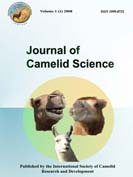
Abstract
The camel is a multipurpose livestock species of great economic importance due to the benefits provided by camel products (meat, milk, wool). This review provides an overview of the impact of climate change on camel production and its adaptation mechanisms. Emphasis was also given to camel contribution to greenhouse gas (GHG) pool through methane emission. As a…
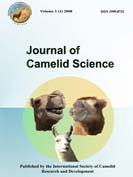
Abstract
Making cheese from camel milk is considered to be a difficult task. A study was conducted to optimize the processing conditions (temperature, pH, CaCl2 and the addition of buffalo milk) for the production of camel milk cheese (CMC). In the preliminary trials, the heating temperature of 65 C for 30 min was found optimal when considering the cheese yield out of 60-75…
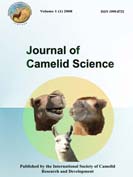
Abstract
During thousands of years of Turkish History, camels were always important in their life. In the past camels were used as transport, pack, ride, war, food, and sport animal by Turks. After industrialization and modernization since 20th century, camel lost their importance and nowadays they are only a sport and tourism material in Turkey. Hence the camel…
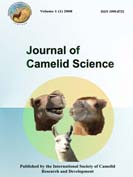
Abstract
The onset of the 21st century opened new prospects for camel milk and the sentience of camel dairies arose and was initiated practically. Many modern camel dairies (intensive camel farming) were established (especially in Arabian Peninsula) with high initial investment. Such models ensured continuous and abundant supply of milk, however this was accompanied with…
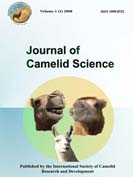
Abstract
A reconstituted skeleton from cleaned bones obtained from an abandoned camel carcass, showed calluses of 18 healed (13 complete and 5 incomplete) fractures at the following sites: I) Seven complete rib-shaft fractures: above their sternal ends. II) Four complete lumbar vertebrae spine fractures. III). A complete spiral fracture separating the left wing of sacrum…

Editorial Board
Editor-in-Chief
Rafat Al Jassim, BSc, MSc, PhD
Nutrition Biochemist & Gut Microbiologist
Honorary Principal Research Fellow
Queensland Alliance for Agriculture and Food Innovation (QAAFI)
The University of Queensland, Australia
Email:…

About
The Journal of Camelid Science (JCS) is the official journal of the International Society of Camelid Research and Development (ISOCARD). It is the leading peer-reviewed camelid research. JCS releases one issue a year and publishes invited reviews, original research papers, short communications, case reports and letters to the editor. Articles published in JCS…







